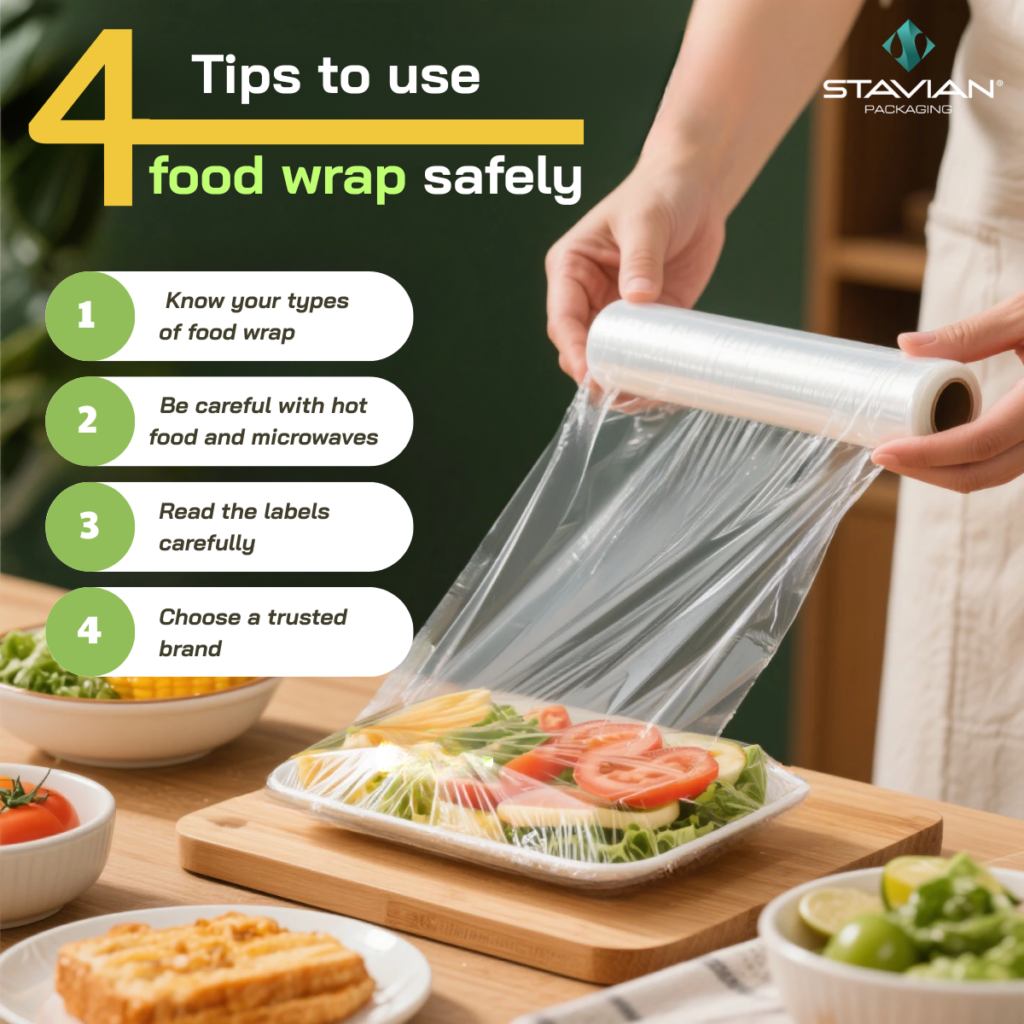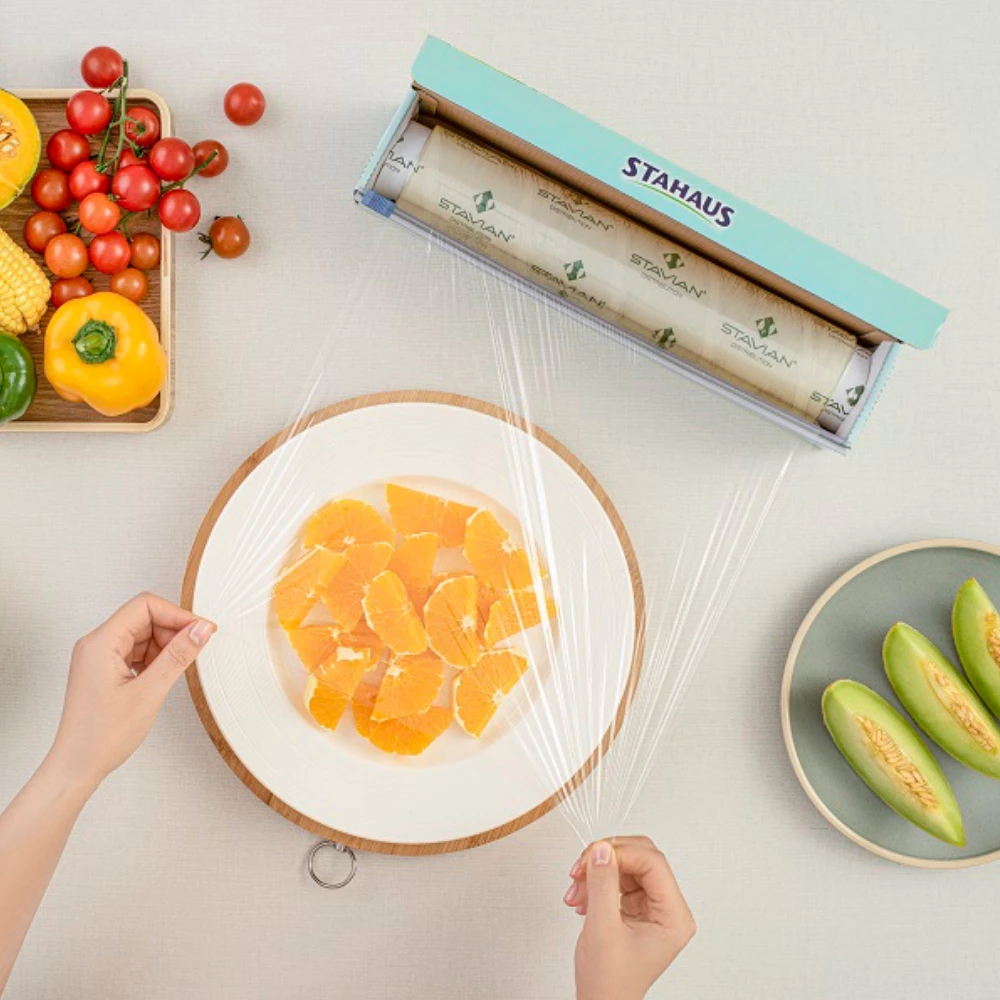Food wrap film, also known as plastic cling film, is a familiar item in every kitchen. It helps preserve food, prevent contamination, and maintain freshness. However, not all food wraps are the same, and incorrect use can affect both food quality and your health. Here are four important tips to help you choose and use food wrap safely and efficiently.

1. Understand the different types of food wrap film
There are two main types of plastic food wrap commonly used today: PE (Polyethylene) and PVC (Polyvinyl Chloride).
PE film has a clear, transparent color with good elasticity and slight stickiness. It is mainly made from virgin polyethylene resin with a very small amount of additives to enhance flexibility and stretch. PE wrap is considered safe for direct food contact and is often used to cover fresh fruits, vegetables, and cooked meals. It is odorless, non-toxic, and suitable for both household and commercial use.
 PE food wrap film
PE food wrap film
PVC film, on the other hand, has a slightly yellowish tint, is softer, glossier, and stickier than PE. Its main component is polyvinyl chloride resin, combined with plasticizers and anti-fog agents to improve mechanical properties. While PVC offers better stretchability and cling strength, it may contain plasticizers or additives that can migrate into food, especially fatty or hot items. Therefore, PE wrap is the safer choice for everyday food storage, even though it may be slightly less durable or clingy compared to PVC.
 PVC food wrap film
PVC food wrap film
2. Be careful when using food wrap with hot foods or microwaves
Heat is one of the biggest factors affecting the safety of food wrap use. Plastic can release harmful substances when exposed to high temperatures. To minimize risks, keep these points in mind:
Let food cool down before wrapping. Avoid covering hot dishes right away. Steam and heat can cause chemical components from the plastic to leach into the food. It’s best to let the food cool to room temperature before sealing it with cling film.
Avoid tight wrapping during microwave heating. When reheating food in the microwave, do not let the wrap touch the food surface directly. Instead, leave a small gap or poke a few holes to let steam escape. This prevents the wrap from melting or sticking to the food.
Limit contact with oily or fatty foods. Fats can dissolve certain plasticizers present in PVC films, allowing them to transfer into the food. If you need to wrap greasy items, choose a certified microwave-safe PE film or place the food in a microwave-safe container instead.
By following these precautions, you can enjoy the convenience of cling film without compromising food safety.
3. Always check labels and safety certifications
Before buying any food wrap, take a few seconds to read the symbols and information printed on the packaging. These labels indicate whether the product is suitable for food contact and specific uses.
Look for the following key certifications and symbols:
“Food Grade” – ensures the material is safe for direct food contact.
“Microwave-Safe” – indicates that the film can withstand heat without releasing harmful chemicals.
“BPA-Free” – guarantees that the product does not contain Bisphenol A, a substance linked to hormonal imbalance and other health risks.
Avoid using plastic wraps without clear labeling or from unknown origins. These products may not meet food safety standards and can potentially harm your health over time.
4. Choose trusted and reputable brands
If you’re looking for a simple and effective solution for daily food preservation, look no further than PE/PVC plastic wrap from Stavian Packaging. With three modern production plants and international certifications such as ISO, BSCI, and BRC, meeting export requirements for the most demanding markets like Europe and Japan, Stavian Packaging is proud to offer high-quality, health-safe, and eco-friendly food wrap suitable for both households and professional food service.
Discover our high quality food wrap here: https://stavianpackaging.com/product/